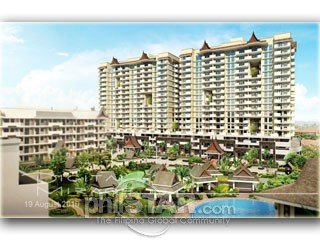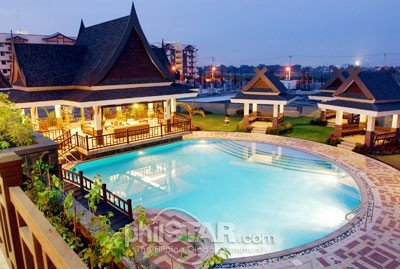Royal Palm Residences
| Product Concept |
| Amenities |
| Location |
| Unit and Building Features |
| Site Development Plan |
| Actual Finishes |
| Price and Payment Terms |
| Availability |
Who is Integrity Realty?
Royal Palm Residences Project News
| Philippine Star 090911 |
| Philippine Star 042911 |
| Philippine Star 031211 |
| Manila Bulletin 022811 |
| Philippine Star 100810 |
Other Information
| Why Choose a REALTOR? |
| FAQs of Buyers |
PROJECTS
| ------- |
| MAKATI |
| ------- |
| MANDALUYONG / SAN JUAN |
| ------- |
| QUEZON CITY |
| ------- |
| TAGUIG / THE FORT |
| ------- |
| PASIG / ORTIGAS |
| ------- |
| MANILA / PASAY |
| ------- |
| PARAÑAQUE / LAS PIÑAS / MUNTINLUPA |
| ------- |
| OUTSIDE METRO MANILA |
INVESTOR UPDATES
| Accolade Place Updates |
| Flair Towers Updates |
| La Verti Residences Updates |
| Siena Park Residences Updates |
| Grass Residences Updates |
| Jazz Residences Updates |
| Light Residences Updates |
PROJECT NEWS
ROYAL PALM RESIDENCES

Royal Palm Residences News in Philippine Star 04-29-2011 |
|
Thai architecture meets tropical charm at Royal Palm Residences The Philippine Star Updated April 02, 2011 12:00 AM  Artist’s rendition of Rawai & Kamala towers
MANILA, Philippines - From afar, this thriving community always invites curiosity from passersby, intrigued by the distinct roof accents that can easily be associated with a culture that is foreign yet familiar. DMCI’s Thai-inspired Royal Palm Residences is a perfect example of the craftsmanship and inspiration that are often seen in projects around the greater metro developed by the country’s leading residential resort specialist. Located within the Acacia Estates township of DMCI Homes in Taguig City, Royal Palm Residences exudes a character of its own as a genuinely attractive development where Thai architecture merges seamlessly with tropical charm.
In fact, among all current projects of DMCI Homes, Royal Palm Residences remains the only project with such a distinguished design intent. Patterned after the principles and design elements of the classic Thai house, the entire development bears a contemporary flair through the infusion of a tropical flavor.
DMCI Homes’ design team refers to the roof design as steep, gable roofs with elegant slopes, as the most noticeable pattern borrowed from the classic Thai house. These are then matched with roof elements like finials and pediments, organic tones to coat the structure, and accents like ornate carvings, to create a unifying character implemented on the building façades and common areas.
Aside from the architecture, the Thai-tropical medley is extended through the use of lush landscaping and water elements as romantic nuances of classic design in an exterior setting. Clustering of structures is also implemented in the Grand Clubhouse, which is a typical Thai architectural influence that fosters the value of a close-knit family or village. There is also an imitation of a pavilion balancing on stilts featured in the Grand Clubhouse, as a tribute to the classic Thai house that seems to float on water.
Doors and windows of the common areas are characterized by carved ornamental wood panels that provide contrast and balance to the steep roof. They also serve the practical function of allowing proper ventilation. Landscaping around the clubhouse and the residential buildings is enhanced with the use of floral and natural arrangements, along with adornments like ceramic vats and potted plants to create an exotic ambience that is typically seen in Thai resorts.
 Sawadee: Royal Palm Residences Clubhouse, inspired by Thai architecture and design
In terms of interior elements, the outdoors are incorporated to allow a free flow of space, and with it, a feel of nature and invigoration. Through the Thai house philosophy of high overhead ceilings, a reduced roof load allows a general feeling of openness inside the structure. Adding to this devotion to space is the use of low-set furniture made from indigenous materials for that tropical flair.
For accent, interiors are liberally decorated with exquisite woodcarvings, gold accents, stilts over water elements, and complemented by colors — purple and gold — that are associated with Thai royalty. Light and dark earth tones are further added to color the walls and fixtures, while numerous water features contribute to the illusion of an environment truly enveloped by nature.
With eight medium-rise buildings with five levels turned over to homeowners, prospective buyers still have a chance to be part of this enthralling community with the launch of Royal Palm Residences’ high-rise components — Rawai and Kamala. These 18-story structures will still offer low-density living features, along with the signature DMCI Homes’ high-rise building technology called the “Lumiventt Design.”
This innovative breakthrough in building design technology symbolizes a combination of the words lumen, which means light, and ventus, which means wind — as a system that allows the free flow of natural light and ventilation around a high-rise structure.
Natural airflow is induced through three-story-high openings called Sky Patios at the front and back of every five-floor level, and through openings at the end of each level. These provide channels through which air can move. Fresh air flows in while stale or hot air is displaced or sucked out. There is also air coming from the breezeways that pass through the landscaped atriums at the center. This breakthrough technology in home engineering is a prominent feature at other DMCI high-rise projects like Tivoli Garden Residences and Flair Towers in Mandaluyong, and La Verti Residences in Pasay.
DMCI Homes is the country’s premier triple A builder-developer that brings serviced, themed communities within reach of urban families who once had limited residential options, but still aspire to achieve a comfortable, enriching quality of life proximate to their place of work.
Click here to go to the source of the article.
|

